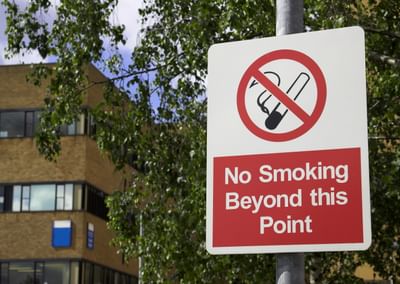What are vapes?
Vapes are battery operated devices that heat a liquid (called ‘e-liquid’) to produce an aerosol that users inhale. They are designed to deliver nicotine directly to the lungs.
Vapes can vary in terms of ingredients and designs. They can look like everyday items such as pens, USB memory sticks, and larger cylindrical or rectangular devices.
The fluid used in vapes can contain over 200 chemicals including formaldehyde and acrolein, used in embalming fluid and weed killer.
Vapes often have very high levels of nicotine, even if labelled as ‘nicotine-free’. Vapes and e-liquids containing nicotine are referred to as Nicotine Vaping Products (NVP).
Are vapes safe?
No, vapes are not considered a ‘safe’ product to use. Vapes don’t come with a comprehensive ingredients list, so users are largely unaware of what the liquid contains. Many people incorrectly believe that vapes only produce flavoured water vapour.
There has been a lot of research in recent years to identify the harms of vaping. Some of the health risks associated with vaping include:
- New evidence showing that vapes are likely to increase the risk of lung cancer and oral cancer.
- Vapes sold in Australia have been found to be labelled incorrectly and may contain nicotine, even when they claim on the packaging that no nicotine is present. Nicotine is a highly addictive chemical, and one vape can contain as much nicotine as 50 cigarettes.
- Emerging evidence shows an increase in blood pressure, heart rate and arterial stiffness – which could potentially increase the risk of developing cardiovascular disease.
- Accidental and intentional nicotine poisoning (including deaths) – Young children are particularly vulnerable to nicotine poisoning through uncapped vials, sucking on the mouthpiece, inhaling or drinking the e-liquid, eating the cartridge or having liquid splashed in the eye. Just one millilitre can be fatal if ingested by a child.
- Seizures amongst teenagers and young adults.
- Burn injuries and fires from exploding vape batteries.
- Ingredients in vapes that are generally safe for eating or skin contact could have long-term effects on health when they are heated, aerosolised and inhaled – potentially compromising lung function.
- Exposing users and bystanders to a range of chemicals and toxins that cause adverse health effects, and may increase the risk of developing cardiovascular disease, cancer and respiratory diseases. Ingredients include chemicals found in cleaning products, nail polish remover, weed killer and insecticides. These harmful ingredients are not commonly listed on the product.
Do vapes help people quit smoking?
The Therapeutic Goods Administration (TGA) has not approved any vape product as a tool to help with quitting smoking.
There are other TGA approved products such as medication, patches, gum, lozenges, mouth spray and inhalators that can be used as quitting aids. These products are proven to be safe to use and are shown to increase chances of quitting smoking, especially when combined with Quitline counselling support.
If you are looking to quit smoking, you can get support from your doctor or pharmacist, or by calling Quitline on 13 7848.










